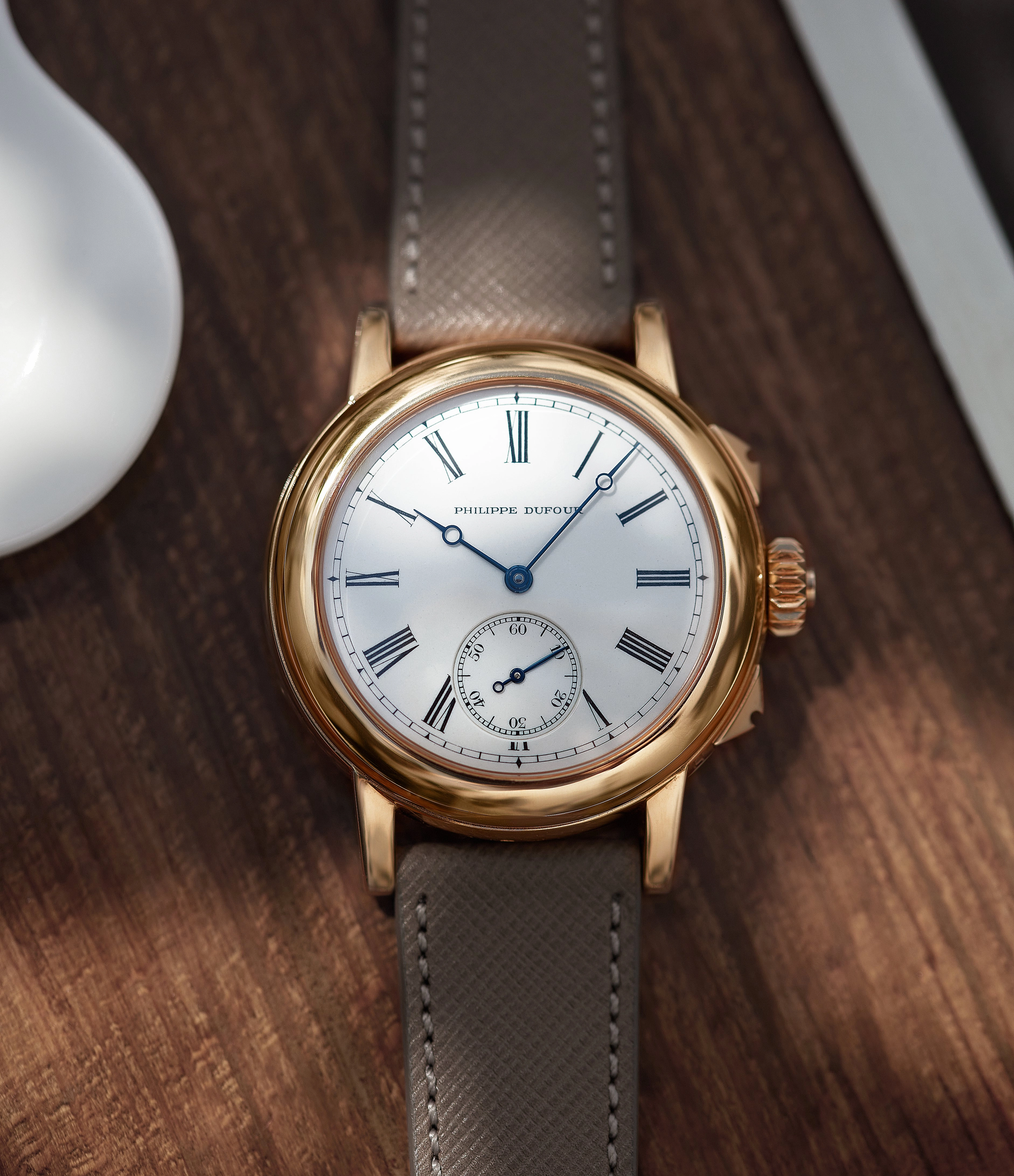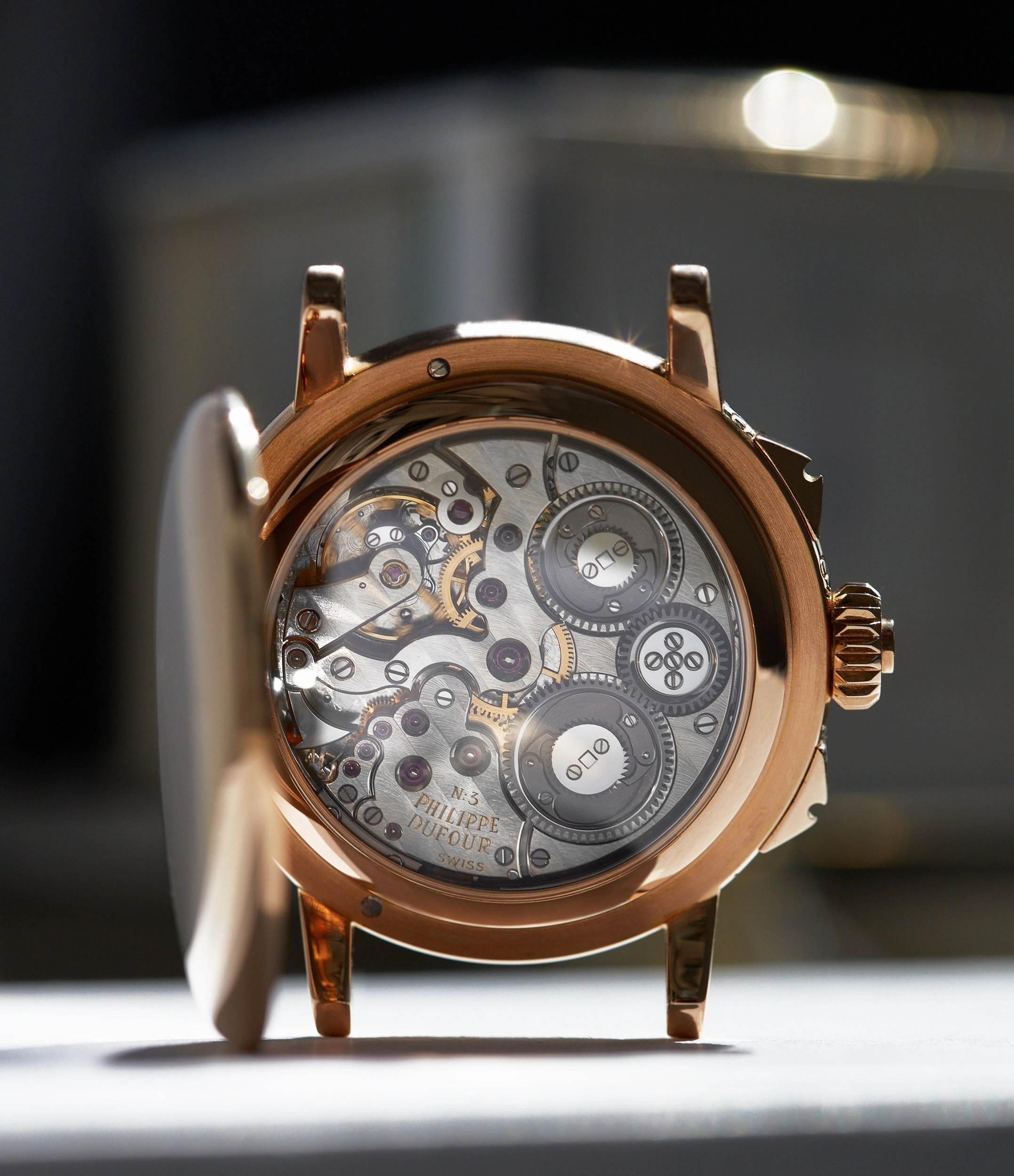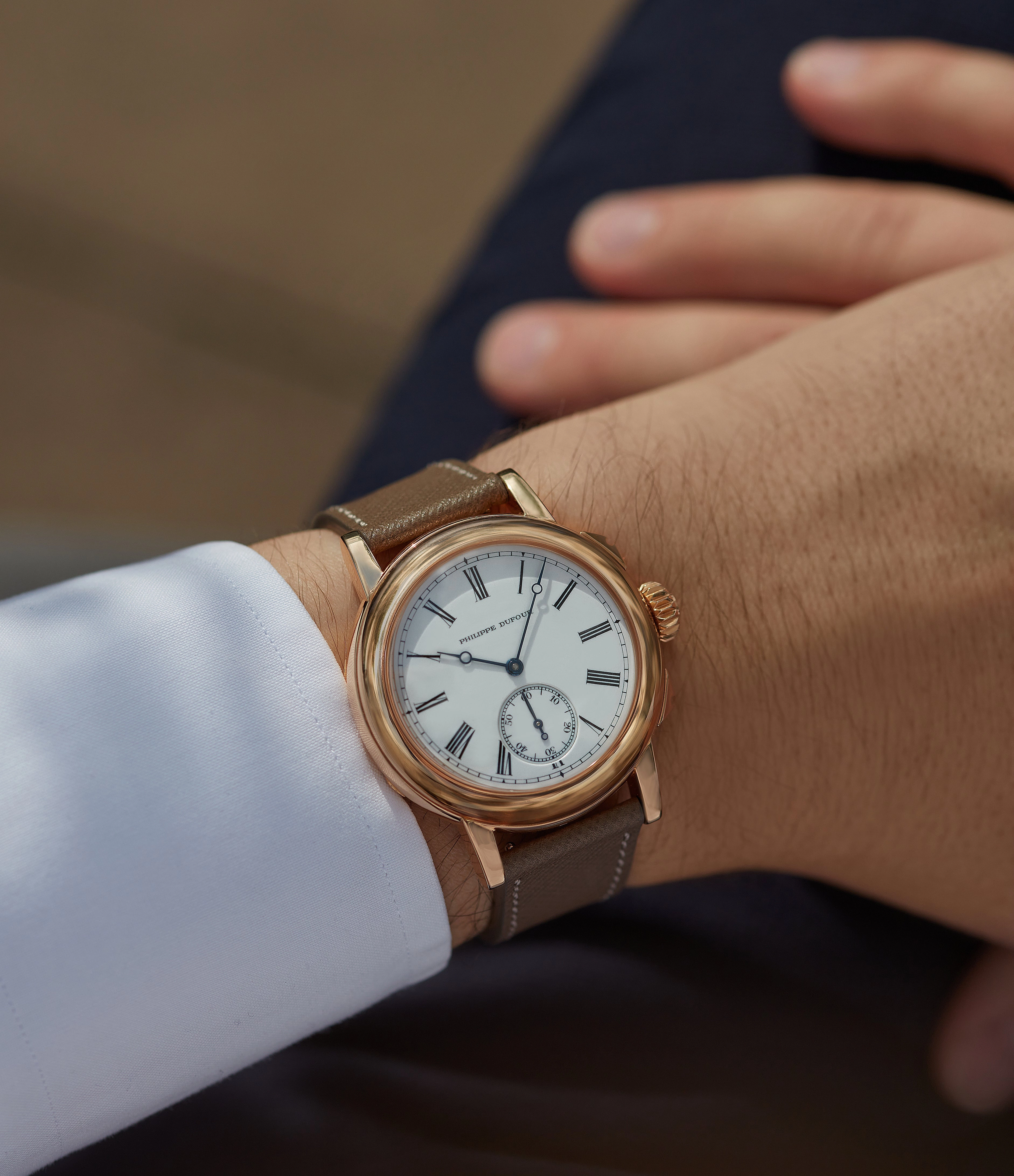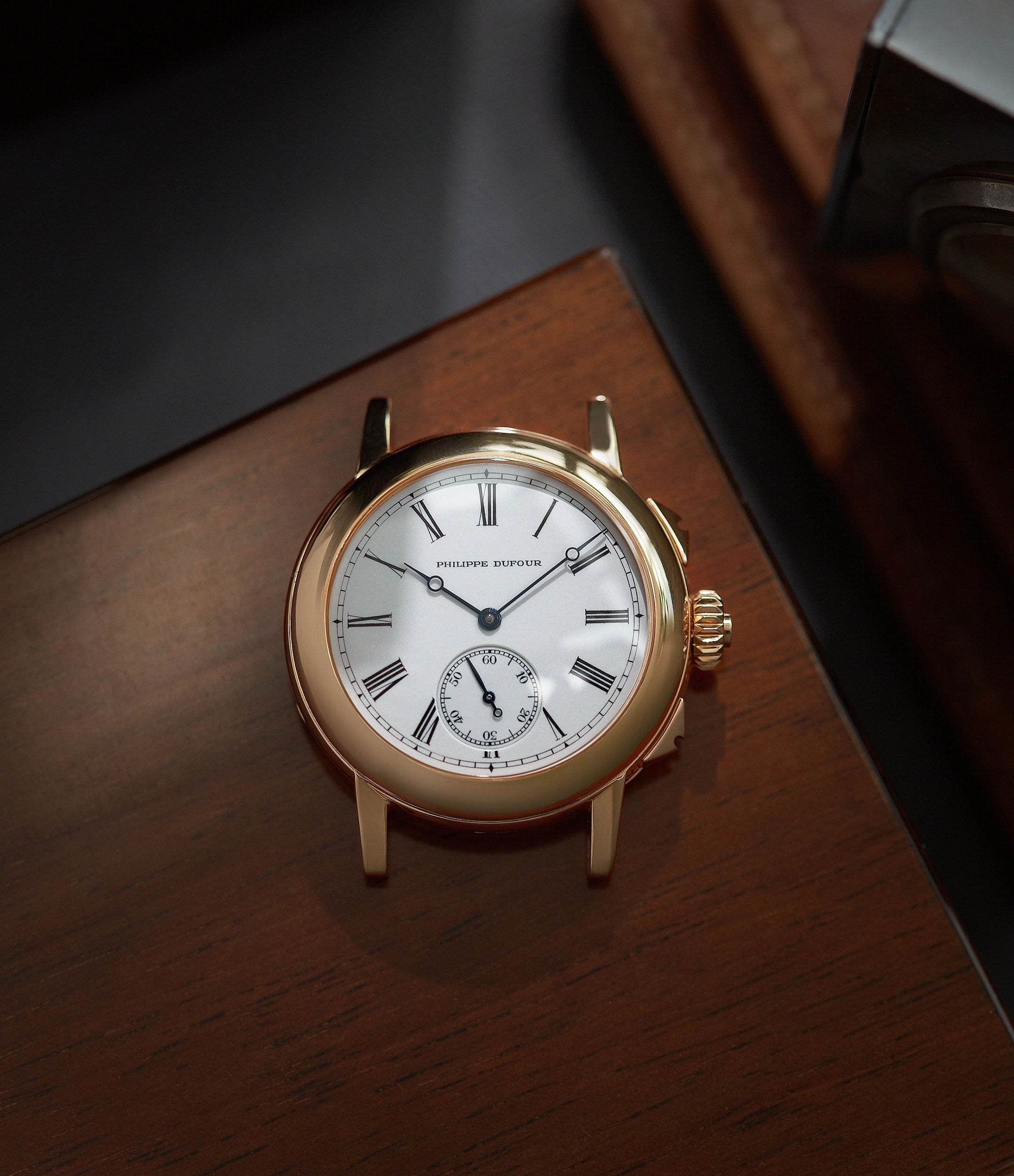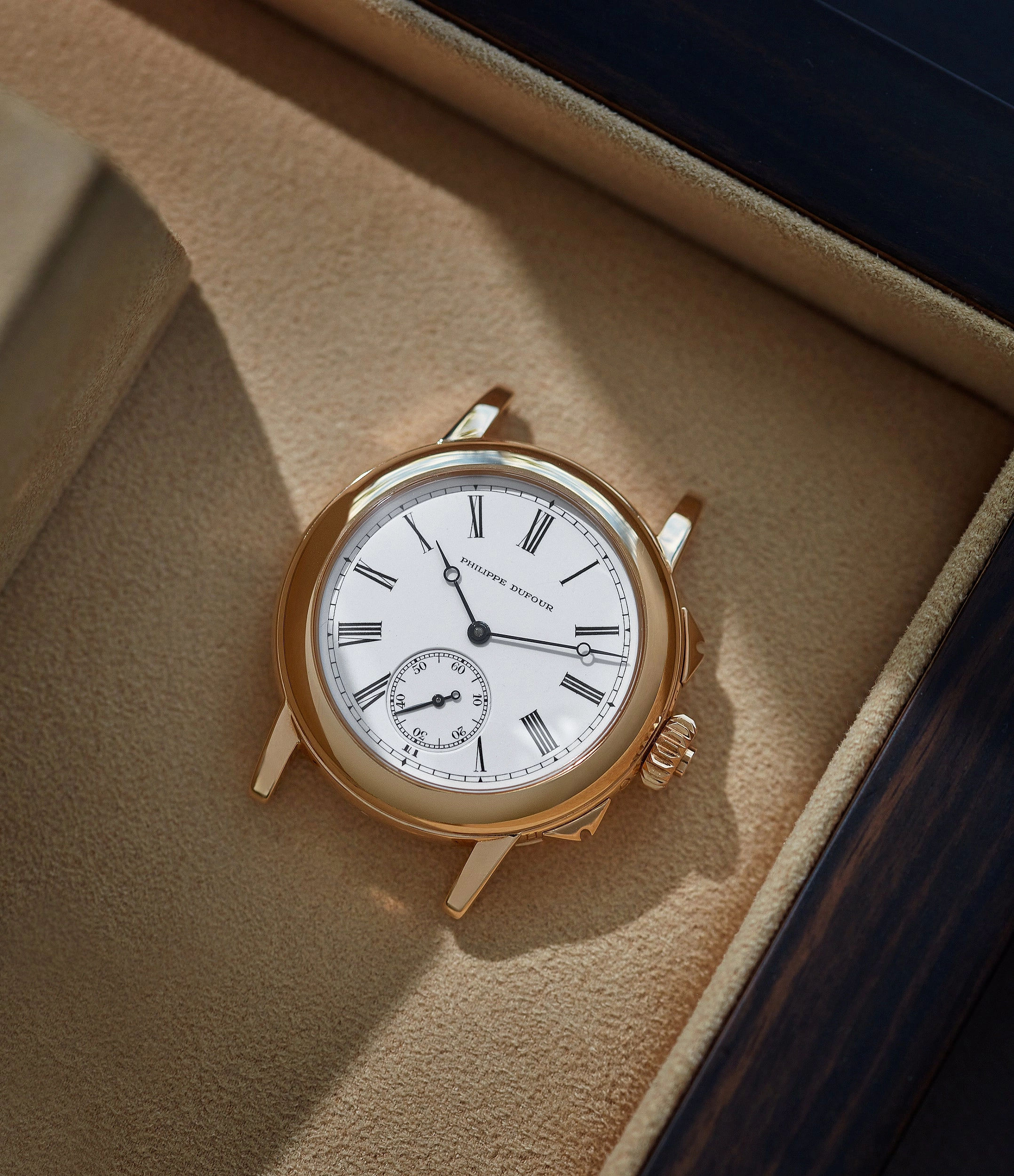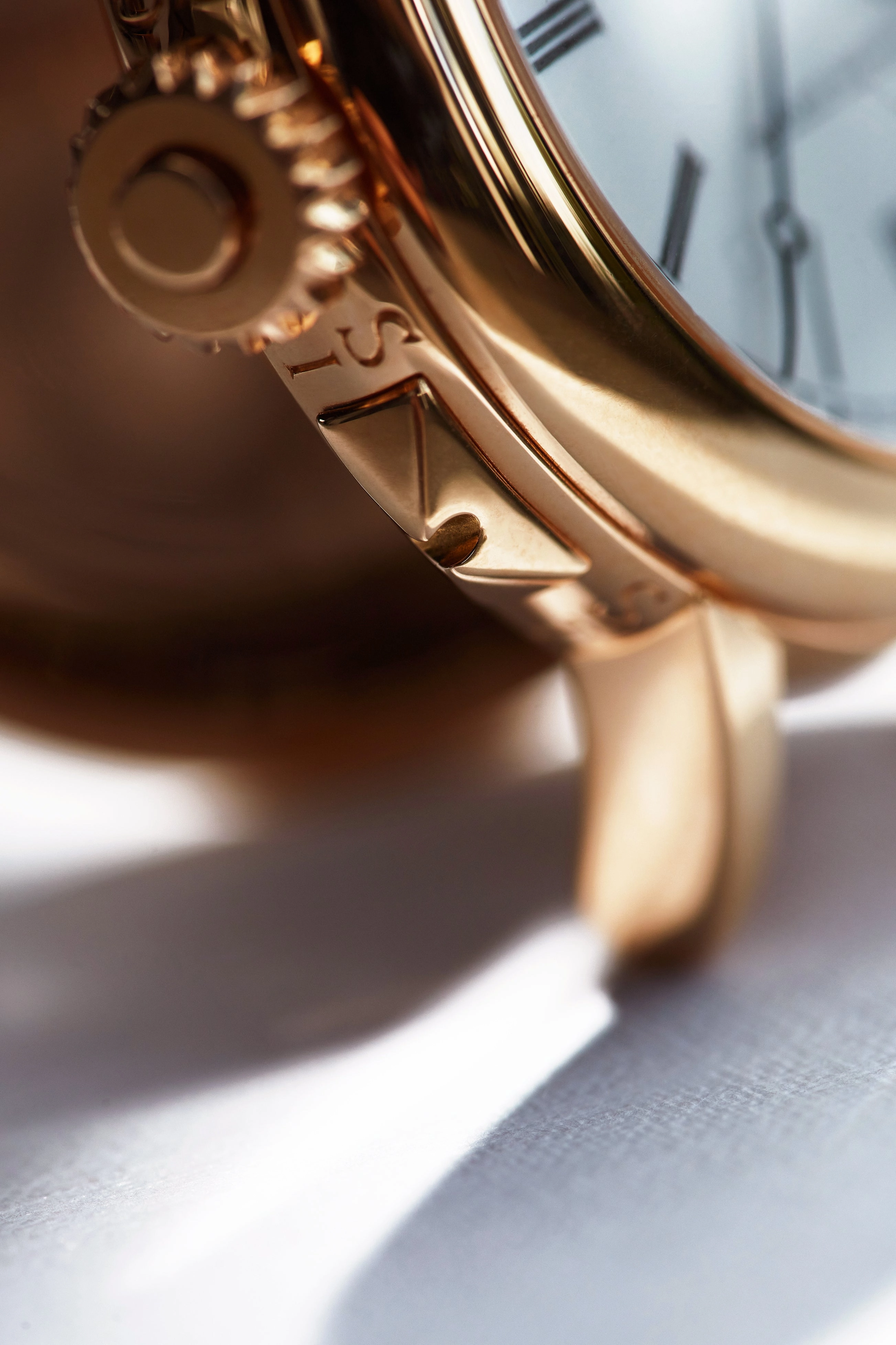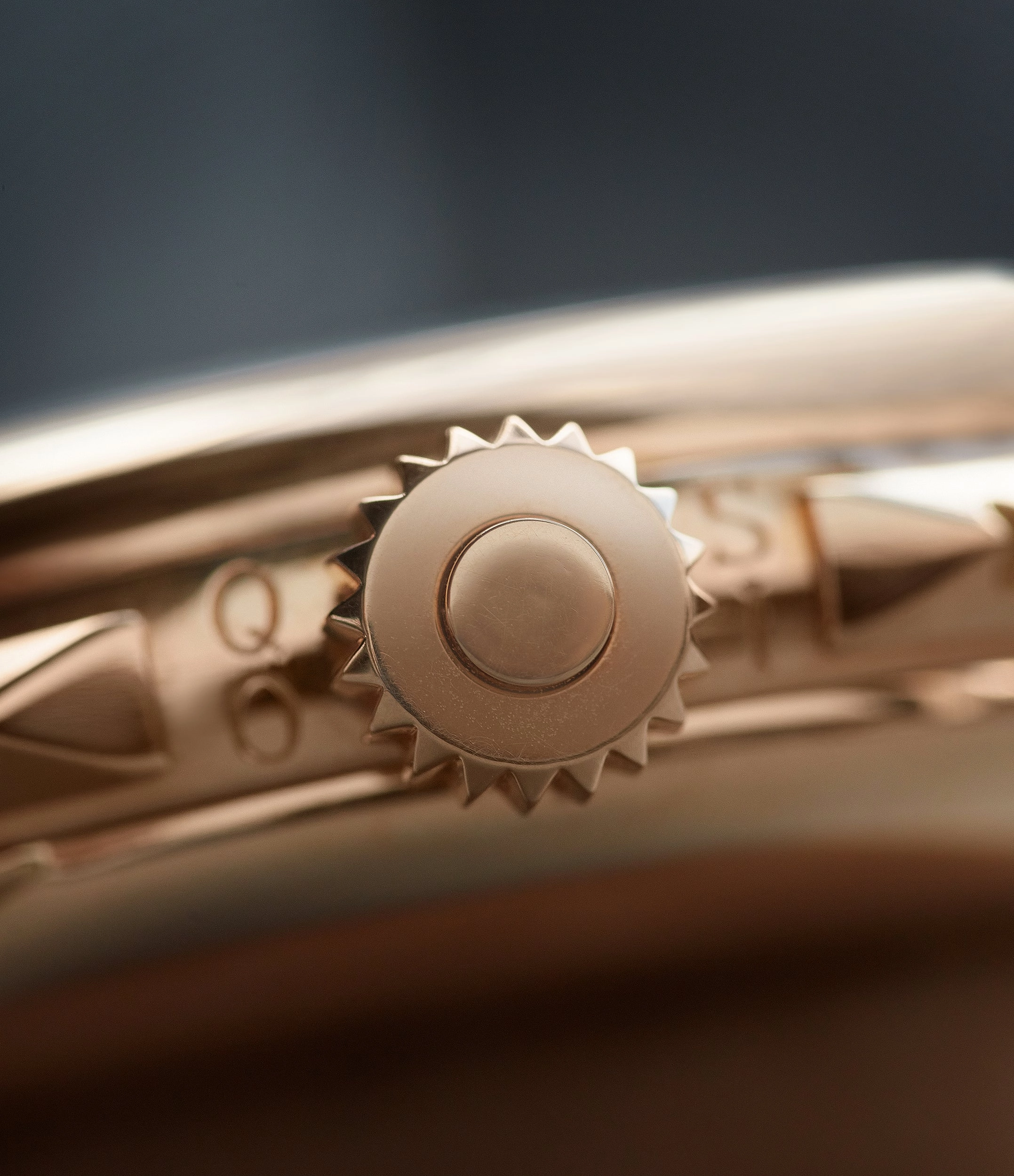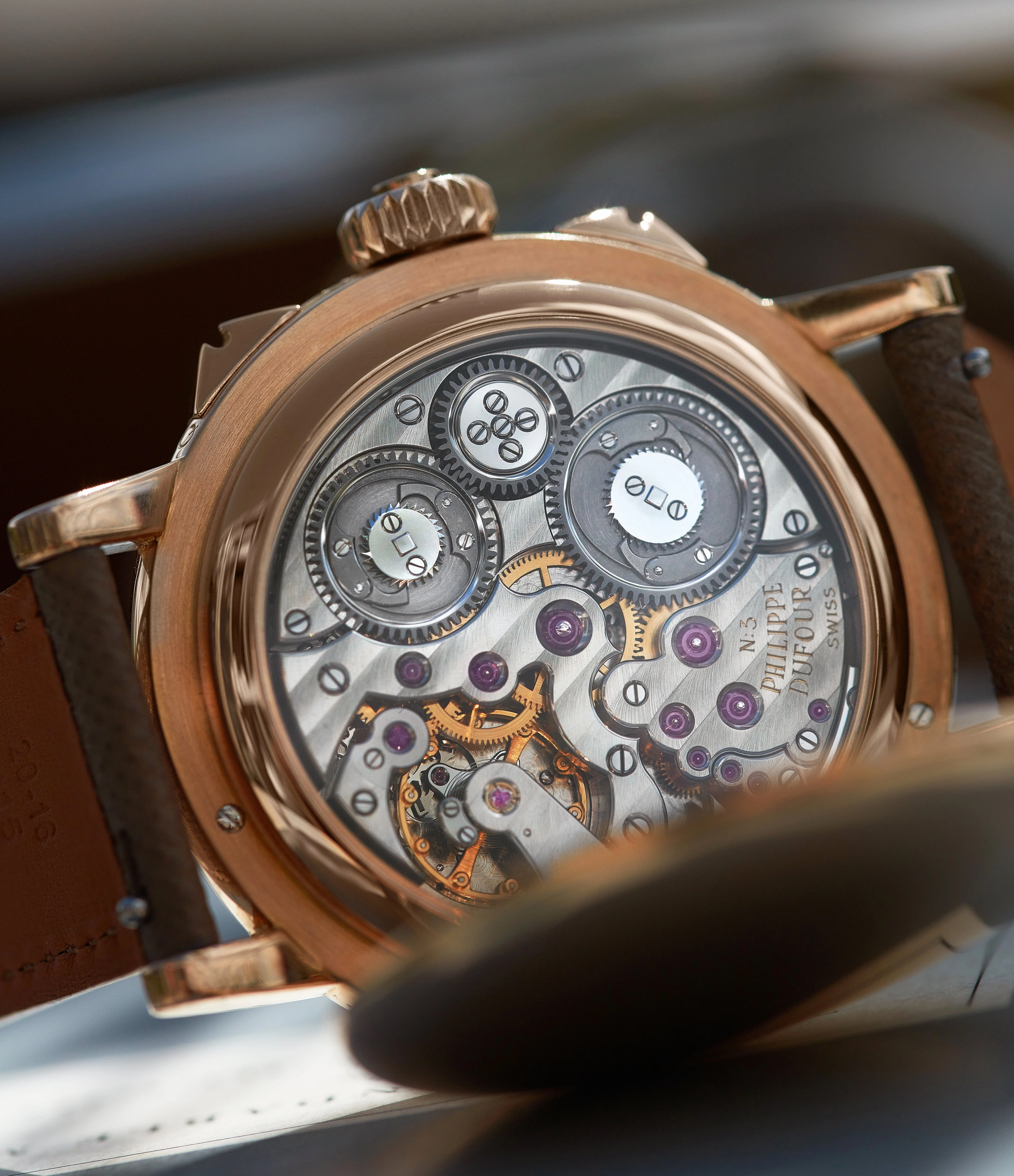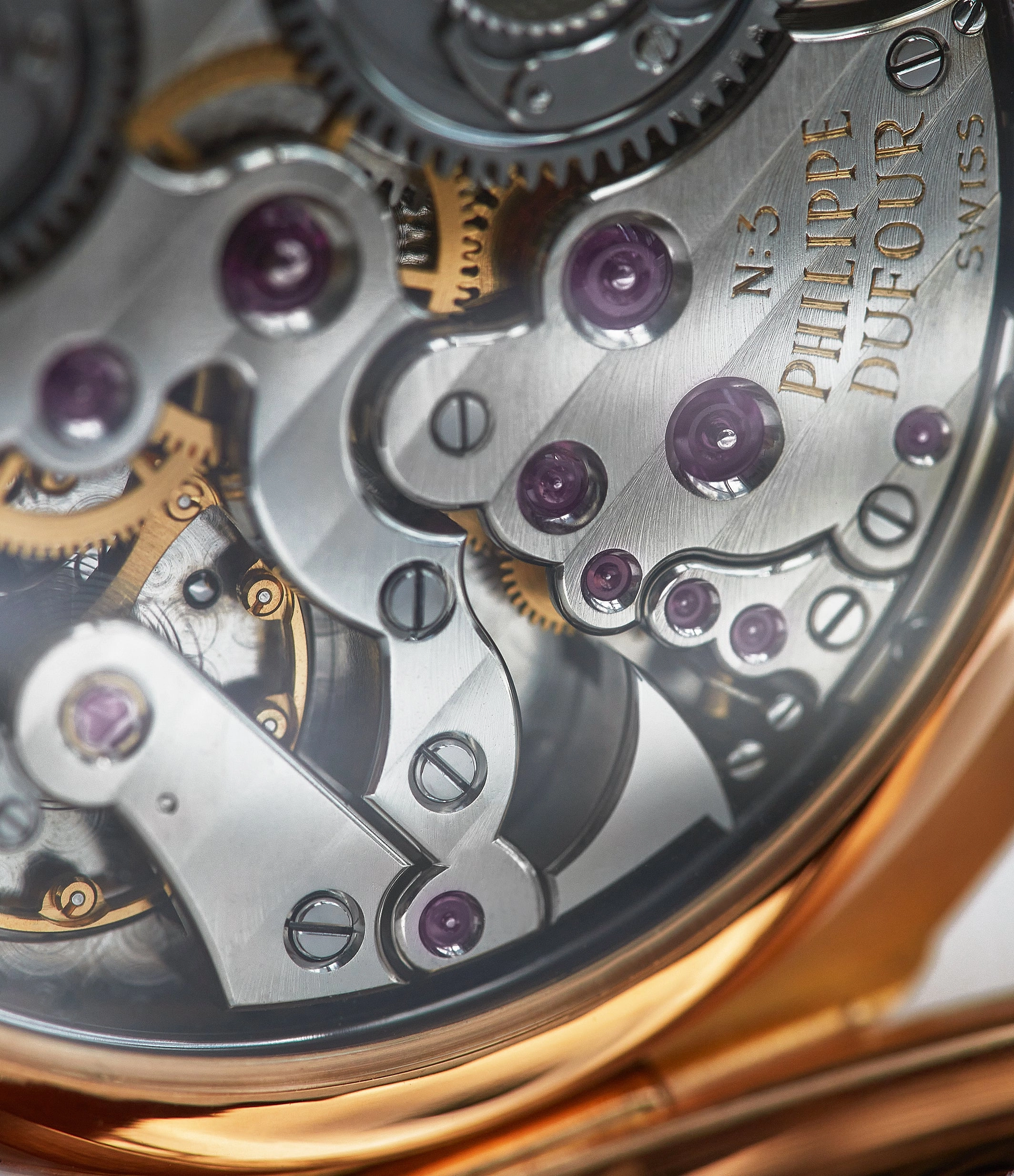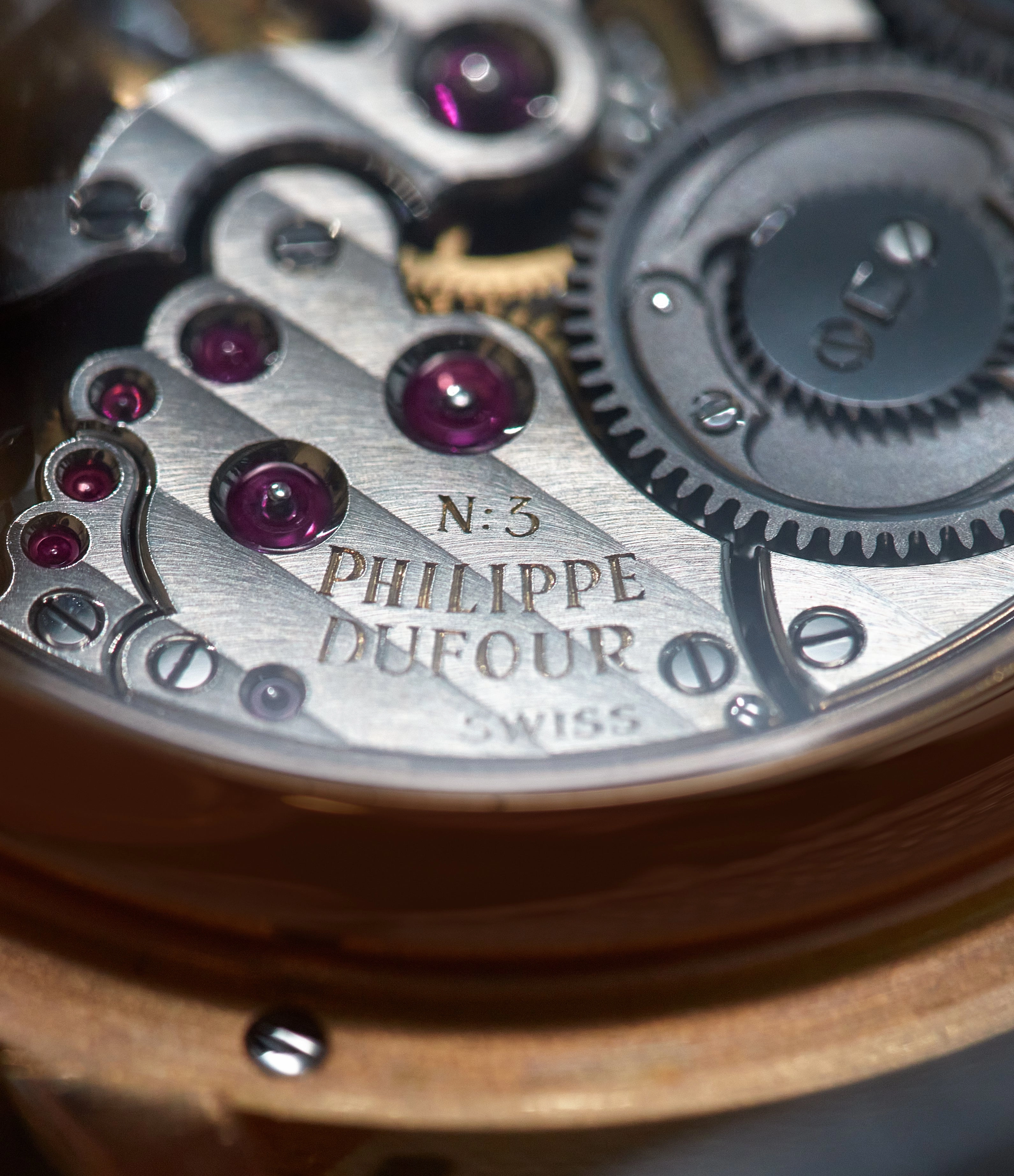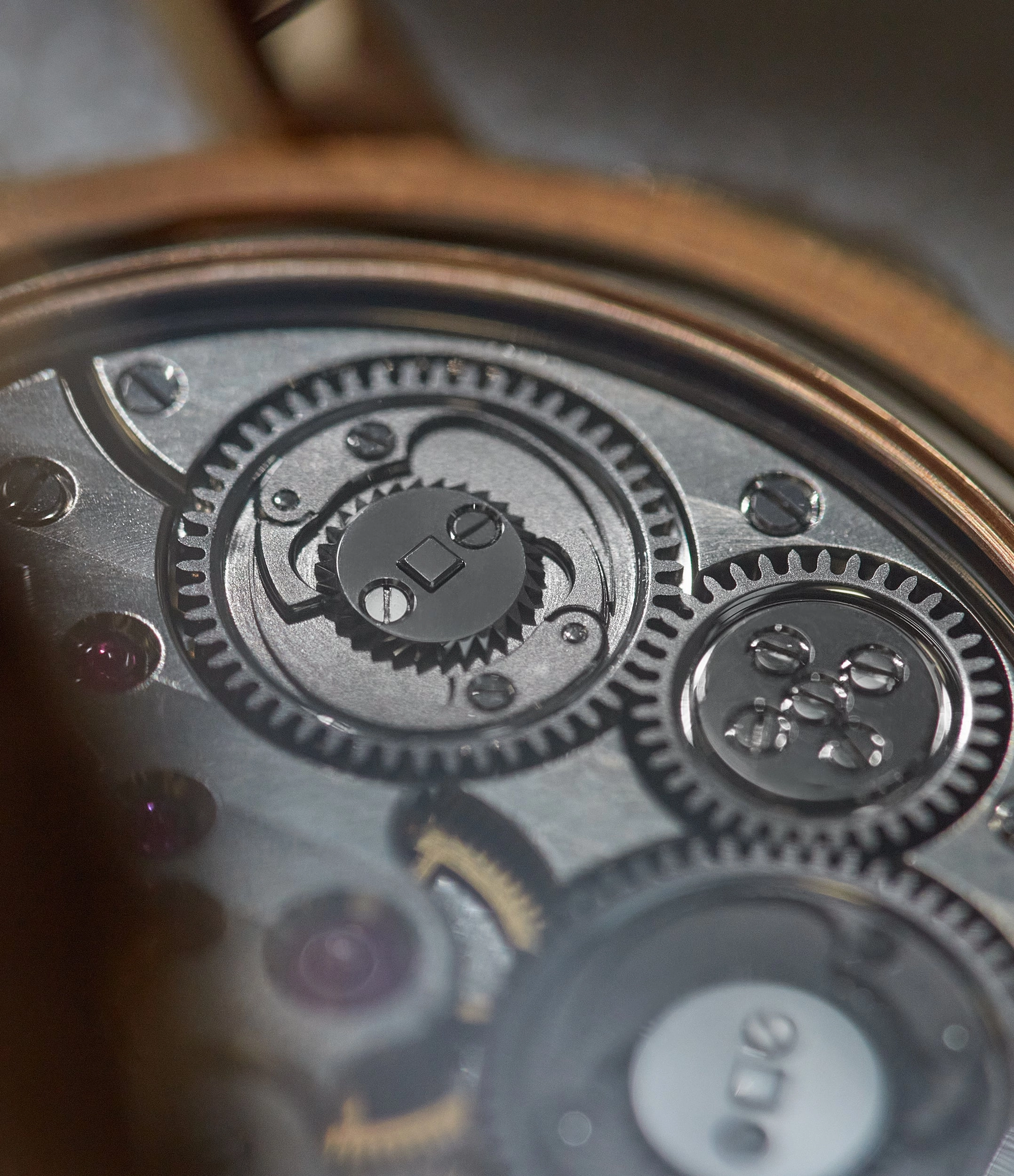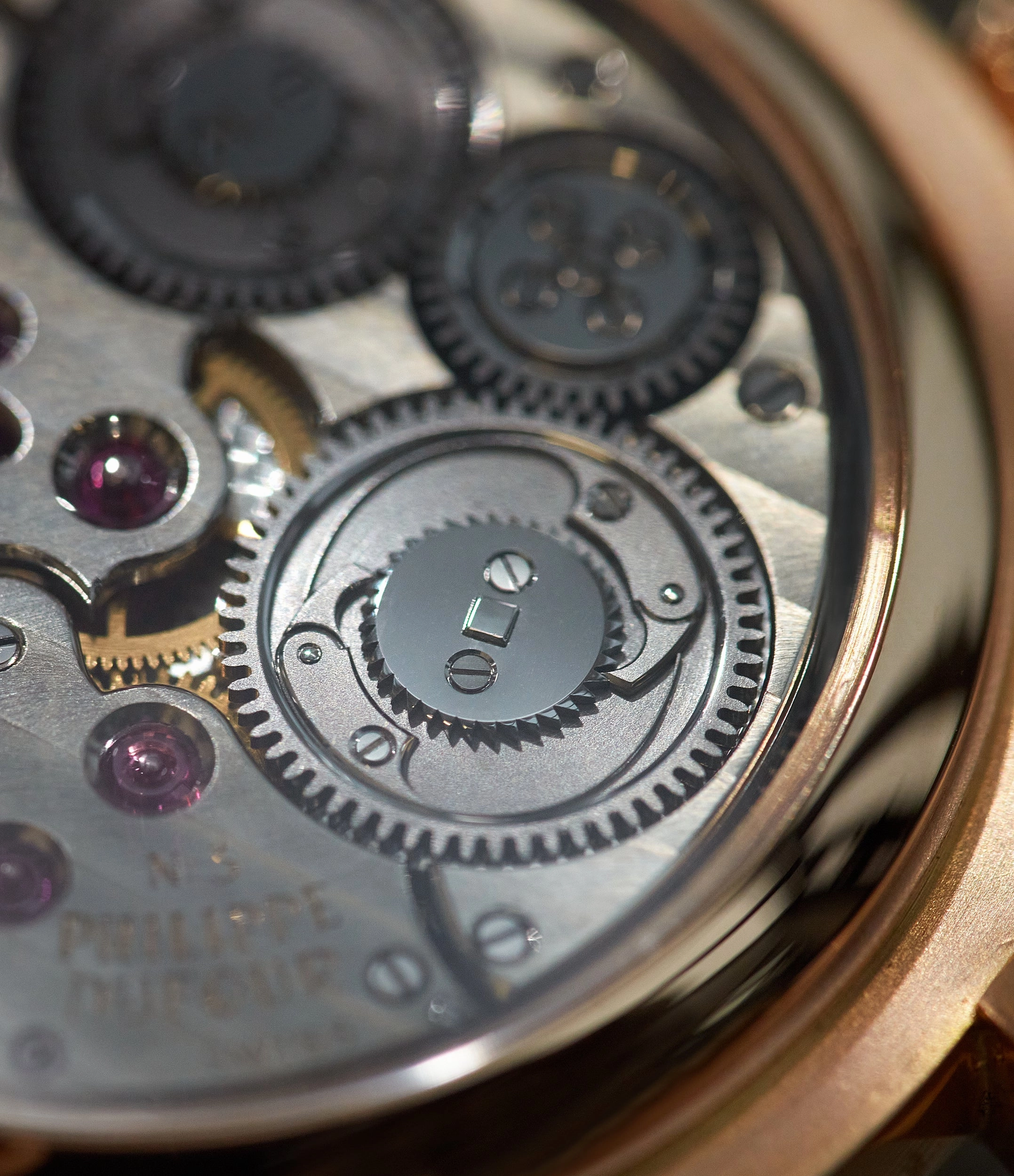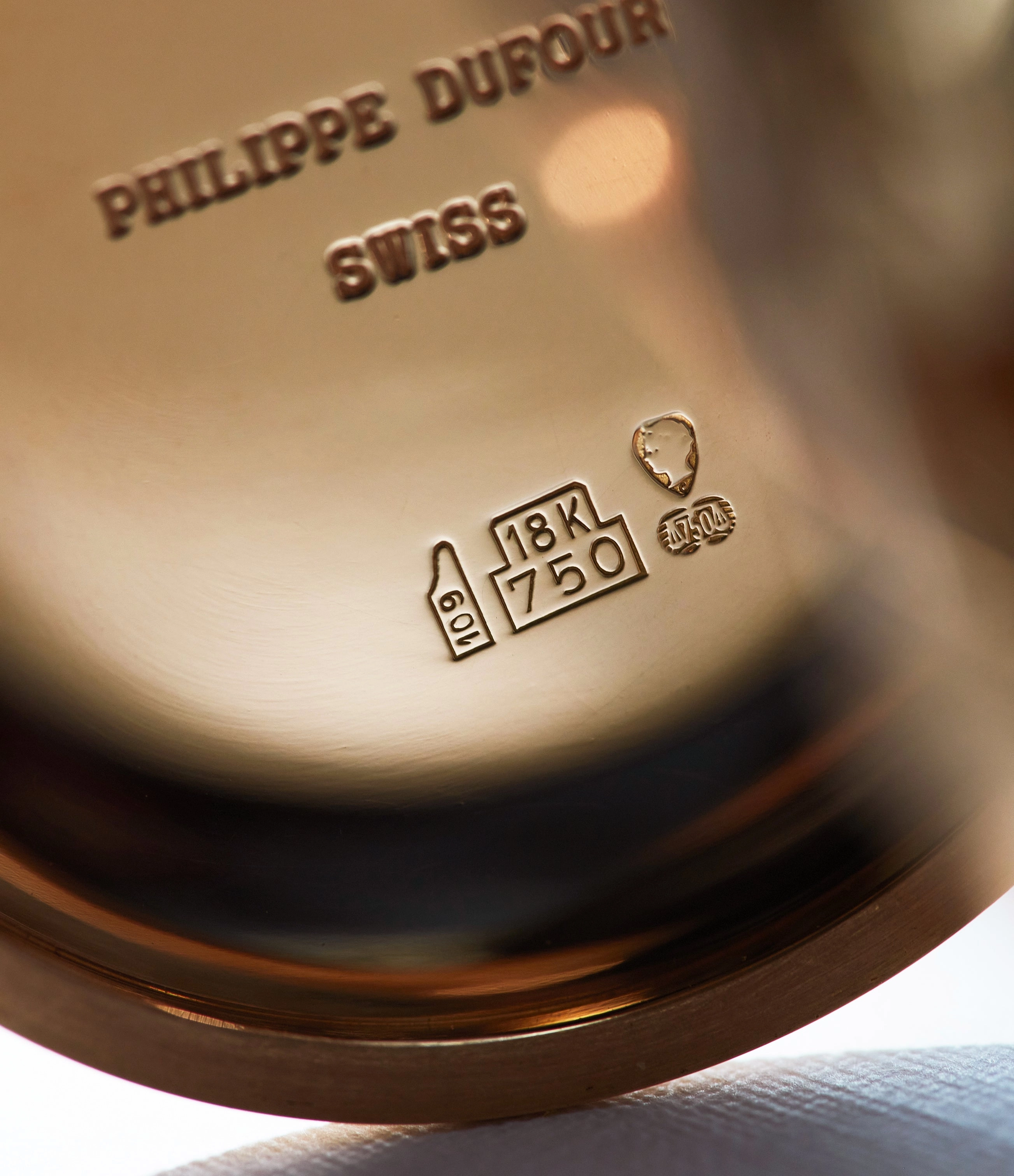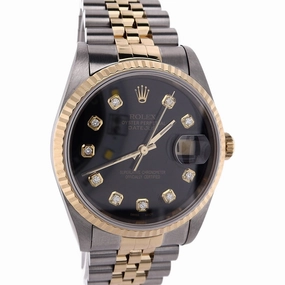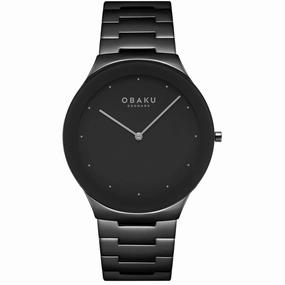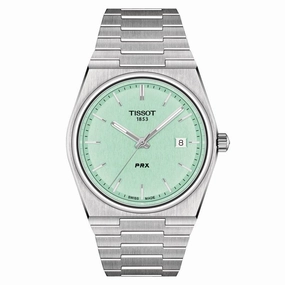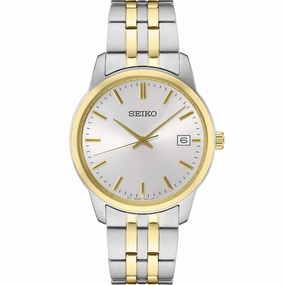Sold for $ 7,630,000.00 on the 16.08.21
The Watchmaker
was born in 1948 in Le Sentier, in the Valle de Joux, to a mother and father who were both watchmakers. At the age of fifteen, he attended the Ecole dHorlogerie in Le Sentier,where he excelled in his studies. Upon graduation, in 1967, he joined Jaeger-LeCoultre, spending time in their after-sales department. Whilst there, he worked closely with Gabriel Locatelli, who became a mentor for the young watchmaker, educating him on all the things you dont learn at watchmaking school, Dufour recalls.
In the following years, he worked for a few different manufactures, including Audemars Piguet, before focusing on restoring antique and vintage watches, on behalf of collectors and auction houses. In doing so, he became enamoured with the pieces which were created in the Valle de Joux between 1800 and 1920, before any sort of industrialisation was introduced. He realised that the bauches created here had been used throughout Switzerland, Germany, and even Britain, making this the epicentre of traditional watchmaking.
Born in the Valle de Joux himself, Dufour became determined to bring back this long-lost style of watchmaking. As he puts it, I never invented anything, I just took inspiration from what was done before me. To start, he decided to design a Grande et Petite Sonnerie pocket watch movement, which would become the first creation of his independent career. Audemars Piguet ordered five, each of which took over 2,000 hours to complete, using traditional tools and methods. However, rather frustratingly, he wasnt allowed to take any credit for these creations, and sadly, two of them were severely damaged by the manufacture.
The Wristwatch
With time, Dufour gradually became more determined to create under his own name. Whilst pondering what to do, he concluded that if you do something like everyone else, you cannot be recognised. When you are small, you must do something special to stand out. As a result, he decided to become the first watchmaker to fit the Grande et Petite Sonnerie complication into a wristwatch. Considered to be one of the most difficult and impressive complications to design and assemble, this effort has cemented Dufours status as one of the greatest independent watchmakers of all time.
Between 1989 and 1992, for two and a half years, he worked on his first Grande et Petite Sonnerie wristwatch. Looking back on the experience, Dufour recalls that I never stopped, not even for a single day. Not for Christmas, not for holidays, nothing. Every day, I was working. I remember going to sleep around 11 at night, because my eyes were crying from focusing all day. Thanks to this dedication and drive, his earliest creation was also his most complicated, and perhaps his most significant.
Over the , Dufour created eight Grande et Petite Sonnerie wristwatches. The watchmaker confirmed to us in August 2021 that five of those feature white enamel dials, whilst three were mounted with a sapphire dial. This example is the third Grande et Petite Sonnerie wristwatch ever made, and the only one to feature a rose gold case and white enamel dial. It was completed in 1995, following nine months of work. According to Dufour, it was originally made for the Sultan of Brunei, an avid collector of independents, which the watchmaker only discovered when he delivered the watch.
An Impressive Complication
The Grande et Petite Sonnerie chimes the time as it passes, with no intervention from the wearer, thanks to small hammers built into the movement. At any given time, the minute repeater can also be activated manually, thanks to a pusher on the crown. Despite its remarkable complexity, the movement was developed to be as simple to operate as possible. Turning the crown clockwise winds the sonnerie, whilst turning it counter-clockwise winds the movement. The winding blocks after a certain point, due to a stopping mechanism which prevents over-winding, similar to what can be found on some antique pocket watches.
Two sliders on the side of the case allow for the adjustment of the chiming function. The watch can be set to both Grande Sonnerie or Petite Sonnerie settings, thanks to the slider at 4 oclock. The Grande Sonnerie strikes the number of hours, on every hour, and the number of hours and quarters on every quarter. Meanwhile, the Petite Sonnerie also strikes the hours and the quarters, but it does not repeat the hours on every quarter. The slider at 2 oclock is used to silence or enable the chiming mechanism.
The movement
As one might expect, the movement is superlative both in terms of construction and finish, bearing resemblance to similar pieces created in the Valle du Joux, during the early 20th century. Two barrels are placed in prime position, with one of them powering the timekeeping mechanism, whilst the other gives energy to the striking function. Both feature the traditional Grande Sonnerie style winding-click, serrated gears with hooks, which connect to curved springs. Meanwhile, one of the hammers for the chimes is visible, whilst the other is hidden under the bridge which proudly displays the watchmakers name. The movement is engraved with N.3, indicating its order within the production.
Dufour is admired for the quality of his finishing, which he achieves entirely by hand, by utilising traditional tools and techniques. The bridges are made from rhodium-plated brass and finished with classic Geneva stripes; the seamless transition between the stripe and the angling on the side of the bridges demonstrates the watchmakers level of skill. The smallest details from the black polish on the escape wheel cock,to the dramatically sharp points of the bridges are thoroughly thought out. Though his approach can be particularly burdensome, Dufour chooses to prioritise these traditional techniques, harking-back to what he considers the golden age of watchmaking.
The design
With the movement being the main focus, the rest of the design is classic and pared back. The white enamel dial is unadorned, with the Philippe Dufour signature taking prime position. The Roman numerals, minute tracks and subsidiary seconds are all printed in black ink, complementing the blued steel hands used for the hours, minutes, and seconds. The rose gold case is polished throughout, with a hinged caseback protecting the movement, which can otherwise be viewed through a sapphire crystal. Measuring 39mm by 14mm, the dimensions are relatively restrained considering the complexity which sits within.
Closer look
| Brand: | |
| Model: | |
| Movement: | hand-made manual-winding |
| Functions: | grande and petite sonnerie, minute repeater, hours, minutes, sub-seconds |
| Features: | enamel dial, Roman numerals, blued steel hands |
| Case material: | rose gold |
| Case diameter: | 39 x 14 mm |
| Crystal: | sapphire front and back |
| Strap: | original rose gold pin buckle and custom-made taupesaffiano leather strap |
| Year: | 1995 |
| Box&papers: | original box |
Condition
This Philippe Dufour Grande et Petite Sonnerie wristwatch is in excellent condition, having been carefully preserved throughout the lifetime of its ownership.
The rose gold case displays very light superficial marks throughout, with no visible deeper imperfections. Equally, the high-polished, inner portion of the case remains unblemished, which is concealed on the underside of a hinged caseback, protecting the movement. The hinge itself operates smoothly, while the caseback secures tightly when pressed shut. At 6 oclock, two hallmarks are visible between the lugs of the case, which are strongly defined. Further hallmarks are revealed within the case, beneath a crisp Philippe Dufour signature, which is engraved. Both the outer and inner case display a soft, warm hue, with the latter showing small signs of oxidation on the brushed section surrounding the sapphire display back. On the right side, the case features two sliders above and below the large, patterned winding crown, which allow for the adjustment of the chiming function. The two sliding mechanisms operate fluidly, uttering a satisfying audible click when engaged, while the pusher on the crown used to activate the minute repeater works as intended.
Underneath the crystal, the white enamel dial is unadorned, with the Philippe Dufour signature taking prime position. The surface of the enamel is crisp and flawless, with indications printed in black ink, complimenting the blued-steel hands used for the hours, minutes and recessed subsidiary seconds.
Provenance
Authenticity
Delivery
Please note, owing to the value of this watch, payment may only be by bank transfer and returns will not be accepted. This is an express deviation from out standard return policy below and as found in our terms and conditions.Shipment will be with fully insured and complimentary with armoured courier.


